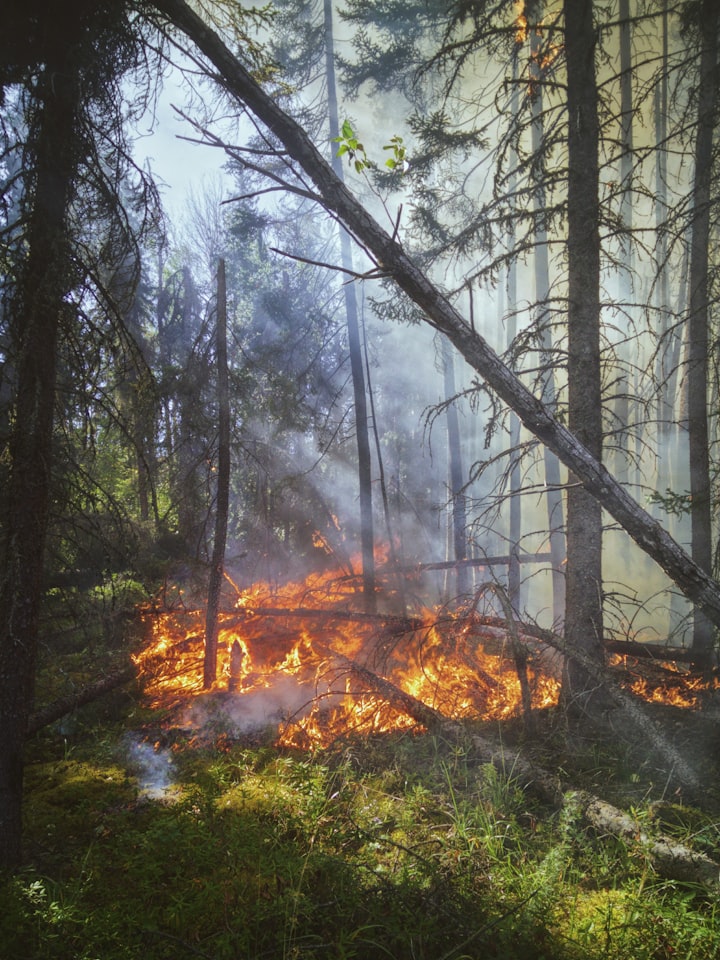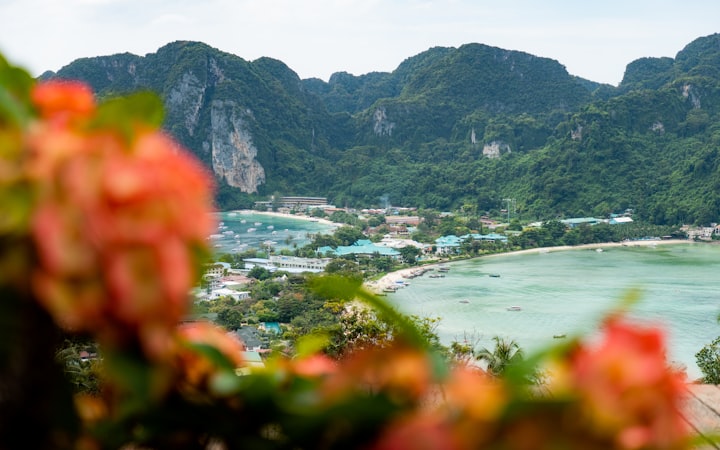
There are various individuals featured in this story.
The first is a catalyst for the tale, a victim of circumstance and a life which may never have gotten a chance to exist. A voice that may never have spoken, a heart that may never have soared.
There are the pair that would suffer the most - the ones that would feel the deep cutting agony of parental loss; to have their contribution to the world torn unfairly away from them so early in time.
There is the first villain, if I felt cynical enough to deem them so. Perhaps my tarring with that brush is unfair; what transpired was merely a product of nature's engine - a survival of the fittest. A rivalry instructed by a power above our own to ensure the growth and positive evolution of a species in 'the grand scheme of things'.
The second villain is the obvious stereotype; shot and stained by natures arrow and pinned to a canvas of malevolence and wickedness. Our interpretation of their act could be controversial. Maleficent intent or predatory habit?
There is the single observer from afar that captured the whole thing in a medium for all others to see. This individual is of another species entirely, of sentience and intelligence arguably higher than that of the others.
Then of course there is our hero - the one that will do the unexpected. An individual whose act came about perhaps as a vestige of its own loss or maybe just instinct itself. Without our understanding of the language in the air, the raucous jabber of noise both simultaneously chaotic and harmonious, we cannot know. But with the help of imagination and romanticism, we can craft this narrative assertively and tell a story to warm the heart. Hence, this is what I am to do, for you, now.
For that is my role as the final individual. The interpreter. The storyteller.
I watch a sequence of events captured by the observer, another of my species located in situ - in the foliage and in hiding not far from the tree, where this tale will take place. Here is the tale:
The young bird is one of a family, third and smallest of the clutch to be born to proud parents. It is the last to emerge from the egg, to breathe the air of the South American rainforest as it washes into the treetop niche it is to call home. When it opens its beak for the first time to recieve its regurgitated feed from its bright father or mother, it is already dwarfed by its elder siblings.
Each time the adult bird approaches the nest descends into quibbling chaos. The three chicks bicker for dominance, to be the first to attend the delivery of much-needed nutrition, fuel for growth. Each time, our little protagonist is left till last, each time its feed is a mere fraction of the initial amount. The leftovers, prerogative to the runt. The poor thing is a shadow of its peers, a pathetic little ball of feathers and down.
On this day, the most fateful of days, it has bustled too close to the edge of its nest. It has climbed onto the lip of the knotted, hollowed trunk of the great tree and is peering, perhaps curiously or unseeing, at the vast rainforest beyond its tiny world.
By folly or design, the eldest chick extends its strengthening wing, already seeing the beginnings of its primary plumage, and nudges its sibling. This brother or sister is our villain. Has it always seen this poor runt as a threat? Merely a competitor for the attention of their parents, and an unnecessary recipient of food it could have had for itself? Or was this purely an accident? We never can know; the language of the birds is unknown to us.
Our little baby bird plunges from the safety of its nest, a headlong dive through scrawny branches and a carousel of green leaves and twigs. Fortunately its interupted, staggered plummet lends to its ultimate survival. Stunned but alive, our little bird finds itself on the forest floor.
Its poor parents know nothing of this until their return from the feeding endeavours moments later; but when they find their nest to be lacking one of its denizens they are suddenly screaming, a mad flurry of wings and tails, a pair of stricken, panicking parents. Their honking and barking and whistling and cracked despair fills the canopy of the forest. The effect is chain-like; their trauma spreads like wildfire through the community. Other macaws have become parroting loudly, all the little birds tweeting and chattering. Many mammals, birds and insccts begin a call of the wild, a cacophony of catastrophe.
For on the forest floor, our little bird is not alone. It has been detected. The nose of a carnivore sniffs, the ears pricked. The tongue of desire and hunger licks its lips and chooses its prey. The feline femme fatale, a jaguar. A small insignificant bird would not fill its belly but would provide a tasty snack.
Closing fast on the little bird, the cat crosses the leaf litter at speed. The sound of the jungle high above reaching fever pitch; every bird is in the air, the screeching and shrieking of terror and sympathy alike. Each parent knows and fears this moment; most of have seen and felt its outcome before. Such is the fate of life.
Suddenly, from nowhere, comes our hero! A mammal with flaps of fur between its legs and the twitchy face of a cheeky sugar glider. It lands on the ground with an uncermonious flump, takes in its arms the quiet, shaking body of the parrot-child, and into the trees does dash. Its speed, agility and skill has it high out of sight before the approaching jaguar has even broken cover.
When the cat arrives, the prey has vanished. It returns, unflinchingly and seeming without care, to its hunt.
The sugar glider, the tiny flying squirrel that cannot truly fly, has carried its downy parcel to the hole in the tree, and lays the little one on the lip of the trunk. The parent macaws are a-flutter with gratitude, their squawks and cackling crossing a species bridge to the mammal to whom they owe their progeny's life.
Without bathing in this gratitude or reaping the gratefulness, our little hero simply exits stage right, its arms and legs outstretched, soaring back into the macrocosm of its own life, its own part in the games of the forest.
The young macaw is shuffled cautiously back into the safe confines of the nest, likely unaware of the miracle that has occurred around it.
All captured by our cameraman and told by me to you, we can take such a warming little yarn to heart. Nature created so much colour here, the primary feathers of the scarlet macaw, with paler but brightening shades in the young. The greens and ambers of the forest; the irridesence of insects big and small. The light of life and the threat of death, the unexpected shine of altruism and underlying brutality of reality.
But nature is beautiful; for every dark moment there is an equally bright one. Did the little sugar glider perform this heroic act out of parental instinct or did it choose to save a life, even that of a species not its own?
Is this a true story of the jungle as seen by the camera that should not lie, or be it poetic license and artistic interpretation by this author? How would you like it to have been? Natures facts or natures fiction?
I'll allow you, as the next individual, to choose.
About the Creator
Andrew Kyle
I'm a wordsmith, and i believe i can, should and will craft as close to the infinite as tolerable, poems and prose alike to entertain and educate, amuse and amaze anybody that would allow me that honour. My imagination knows no limits.






Comments
There are no comments for this story
Be the first to respond and start the conversation.